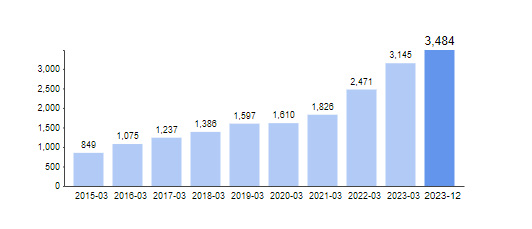20 New Tips For Picking Ai Trade In Stocks
20 New Tips For Picking Ai Trade In Stocks
Blog Article
Top 10 Ways For Using Sentiment Analysis To Help You Trade Stocks Ai From Penny To copyright
In the case of AI trading in stocks, using sentiment analysis is a powerful method to gain an understanding of market behavior. This is especially the case for penny stocks and copyright where sentiment has a major role. Here are ten tips to help you use the power of sentiment analysis in these markets.
1. Sentiment Analysis: Understanding the Importance of it
Tips: Keep in mind that prices' movements over the short term are influenced by the mood, especially with regard to speculative stock and copyright markets.
Why: The public's sentiment is often a leading indicator of price changes, and therefore a good signal to trade.
2. AI-based analysis of a variety of data sources
Tip: Incorporate diverse data sources, including:
News headlines
Social media (Twitter Reddit Telegram, etc.
Blogs and forums
Earnings press releases and call
Why? Broad coverage gives a better overall picture of the mood.
3. Monitor Social Media In Real Time
Tips: Monitor topics that are trending with AI tools such Sentiment.io as well as LunarCrush.
For copyright For copyright: Focus on influencers and also discussions around specific tokens.
For Penny Stocks: Monitor niche forums like r/pennystocks.
Why: Real-time monitoring helps make the most of new trends.
4. The focus is on measures of sentiment
Tip: Pay attention to indicators like:
Sentiment Score: Aggregates positive vs. negative mentions.
Quantity of Mentions: Measures buzz or hype surrounding an asset.
Emotional Analysis: Assesses excitement, fear, and uncertainty.
The reason: These indicators can offer insight into market psychology.
5. Detect Market Turning Points
Tip: Use data on the sentiment of people to find extremes in positive and negative.
Why: Contrarian strategies often prosper at extremes in sentiment.
6. Combining Sentiment and Technical Indicators
For confirmation the sentiment analysis, you can pair it with conventional indicators like RSI or Bollinger Bands.
Why: The use of sentiment alone can lead to false indicators; technical analyses provide additional context.
7. Automated integration of sentiment data
Tip: AI trading bots should include sentiment scores in their algorithms.
Why: Automated market response allows for rapid responses to shifts in sentiment.
8. Account for Sentiment Management
Avoid pump-and-dump scams and fake stories, especially in copyright or penny stocks.
How: Use AI tools to spot irregularities, such as sudden spikes in mentions from suspicious accounts or low-quality sources.
You can safeguard yourself from fake signals by recognizing manipulative behavior.
9. Test strategies using Sentiment Based Strategies
Tips: Test the performance of sentiment-driven trading in the past under market conditions.
The reason: By doing this, you can make sure that sentiment analysis is an essential to your trading strategy.
10. Monitor the mood of influentials
Tip: Use AI as a method to identify market influencers. These could be prominent analysts, traders or copyright developers.
For copyright For copyright: Pay attention to posts and tweets from prominent individuals such as Elon Musk or other prominent blockchain pioneers.
Watch the comments of the industry's analysts or activists.
The reason: Influencers have the ability to influence market sentiment.
Bonus: Combine Sentiment Data with Fundamentals and On-Chain Data
TIP: When trading copyright think about incorporating sentiment into the fundamentals of your portfolio, such as earnings reports for penny stocks and on-chain information (like wallet movements) to help you trade copyright.
The reason: Combining various kinds of data provides more complete information, and less emphasis is placed on sentiment.
With these tips you can apply sentiment analysis to the AI-based strategies you employ to trade both for penny stock and cryptocurrencies. Follow the recommended ai trading app examples for blog advice including ai for stock trading, ai for stock trading, ai trade, ai stock picker, ai trading, ai trading, ai trading software, stock market ai, ai stocks to buy, ai copyright prediction and more. 
Top 10 Tips To Enhance Data Quality In Ai Stock Pickers, Predictions And Investments
In order to make AI-driven investments selection, stock selection, and predictions, it is essential to emphasize data quality. AI models are more accurate and reliable if they utilize quality data. Here are 10 top techniques for AI stock-pickers in order to ensure top quality data:
1. Prioritize data that is clean and well-structured.
TIP: Ensure your data is clean and error-free. Also, ensure that your data is formatted in a consistent manner. This includes eliminating duplicate entries, handling the absence of values, and maintaining integrity of data.
The reason: AI models can make better decisions when using clear and well-structured data. This results in more accurate predictions and fewer errors.
2. Ensure Timeliness and Real-Time Data
Tip: Make use of current market data that is real-time for predictions, including volume of trading, stock prices, earnings reports, and news sentiment.
Why: Timely market information permits AI models to be more accurate in capturing current market conditions. This assists in making stock selections that are more accurate particularly for markets that are highly volatile such as penny stocks and copyright.
3. Data from reliable suppliers
TIP: Choose reliable data providers and have been tested for fundamental and technical data like economic reports, financial reports and price feeds.
Why? A reliable source reduces the risk of data inconsistencies and errors which can impact AI models' performance, which can result in false predictions.
4. Integrate multiple data sources
TIP: Mixing different sources of data, such as financial statements and news sentiments media and macroeconomic indicators.
The reason is that multi-source methods give a more complete picture of the market. AI can then make better decisions based on a variety of aspects related to stock behavior.
5. Focus on historical data for testing backtests
To assess the effectiveness of AI models, gather quality historical market data of a high-quality.
The reason is that historical data can help in the refinement of AI models. You are able to test trading strategies in a simulation to evaluate potential returns and risks and make sure that you have AI predictions that are robust.
6. Check the quality of data continuously
TIP: Make sure you regularly check and verify data quality by looking for any inconsistencies or outdated information and ensuring that the data's accuracy.
The reason: Consistent validation of data minimizes the chance of incorrect predictions resulting from outdated or incorrect data.
7. Ensure Proper Data Granularity
Tips: Choose the appropriate level of data granularity to suit your strategy. Use minute-by-minute information for high-frequency trading, and daily data for long-term investment decisions.
Why: Granularity is important for the model's goals. High-frequency data is useful to trade on the spot, but information that's more thorough and less frequently is used to aid in long-term investment.
8. Utilize alternative sources of data
Make use of alternative sources of data like satellite images or sentiment on social media. You can also use scraping the internet to uncover market trends.
The reason: Alternative data can give you unique insights on market trends. Your AI system will gain a competitive advantage by identifying trends which traditional data sources might miss.
9. Use Quality-Control Techniques for Data Preprocessing
Tips: Make use of methods to ensure data quality, such as normalization of data, outlier detection and feature scaling prior to feeding data raw into AI models.
The reason: Proper preprocessing will make sure that the AI model is able to accurately interpret the data, reducing the number of errors in predictions as well as improving the overall performance of the model.
10. Track Data Drift and adapt Models
Tip: Monitor data drift to determine if the characteristics of data shifts over time. Then, alter your AI models accordingly.
Why: A data drift can have a negative impact on the accuracy of model. By sensing and adapting to changes in data patterns, you ensure your AI model is effective throughout time, especially in dynamic markets like penny stocks and copyright.
Bonus: Maintaining an open loop of feedback for data improvement
Tip: Set up a loop of feedback where AI models continuously learn from new data. This can help to improve the data collection and processing method.
Why: A feedback system permits the improvement of information over the course of time. It also ensures that AI algorithms are evolving to keep pace with market trends.
It is vital to place an emphasis on the quality of the data in order to maximize the value for AI stock pickers. AI models will be able to make more accurate predictions when they have access to high-quality data that is clean and current. This leads them to make better investment decisions. These suggestions can help you ensure that your AI model is built on the most reliable base of data to back the stock market, forecasts and investment strategies. Check out the best trading ai advice for more info including ai stock, incite, best stocks to buy now, ai trading software, stock market ai, ai for trading, stock ai, ai copyright prediction, ai trading software, incite and more.